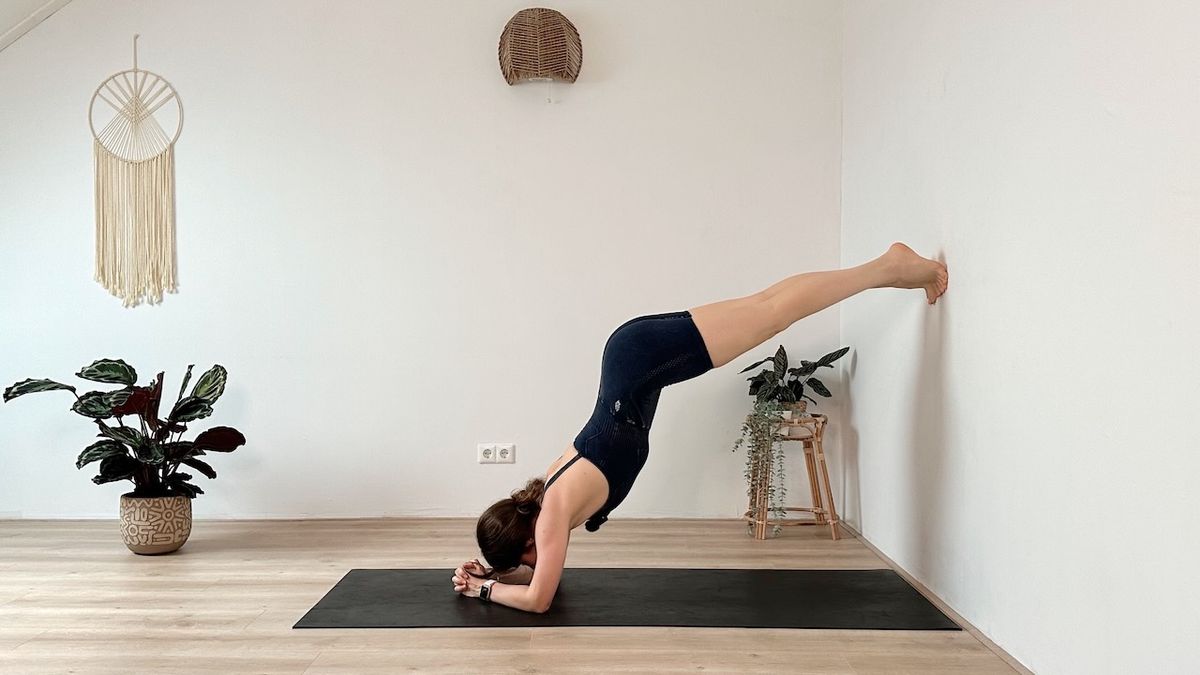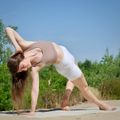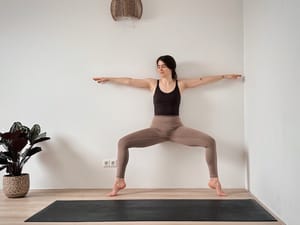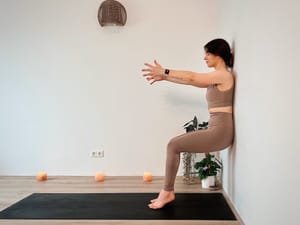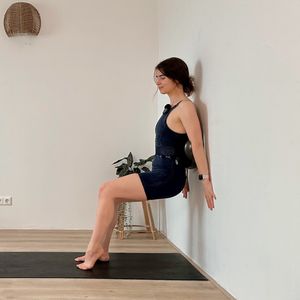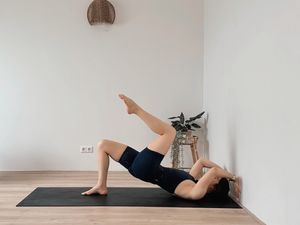Walls aren't just for holding up a roof anymore; they can be your new workout companion to switch up your Pilates routine! In this guide, I'll walk you through some of my personal favorite wall-assisted Pilates exercises. From alignment tips to variations that suit every level, I hope you find just what you need to take your Pilates practice to new heights.
There are many more amazing exercises you can do at the wall and good news 🥳 we're exploring them all in my Wall Pilates videos that are part of the free 10 Day Wall Pilates Challenge. But of course, you can do each of the videos on its own!
Wall Pilates Exercises: Abs, Legs, Glutes & Arms
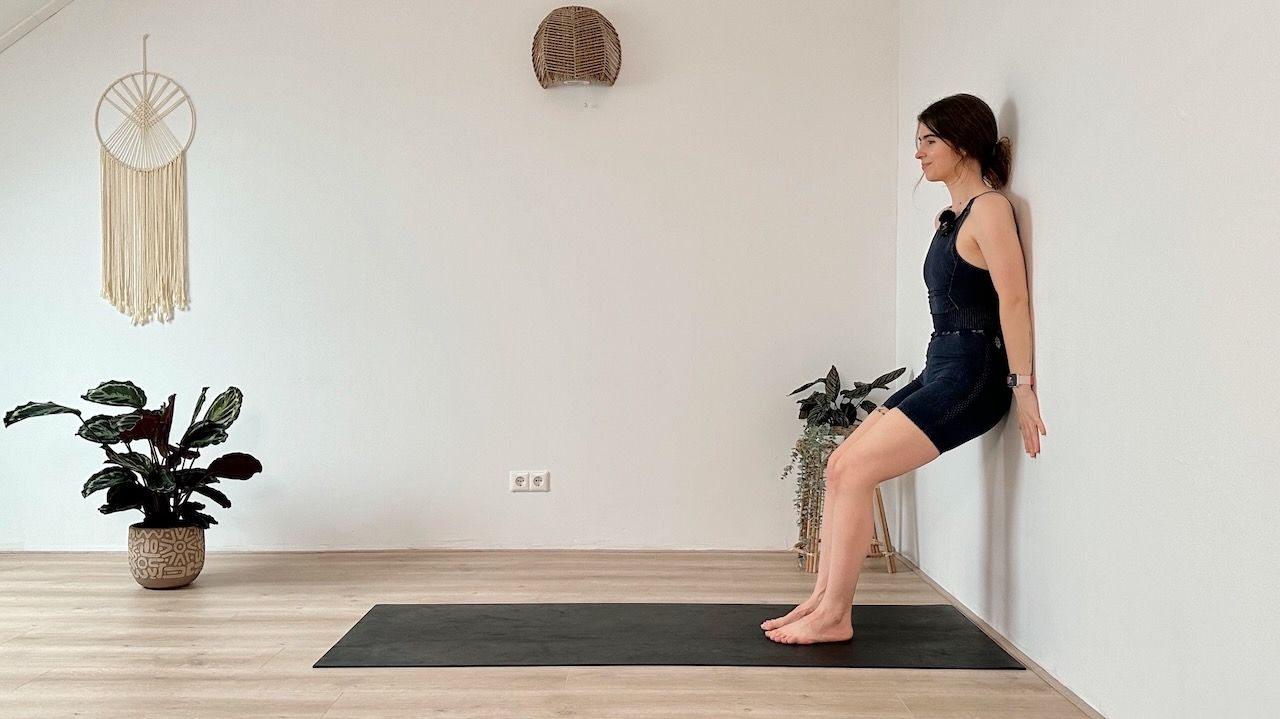
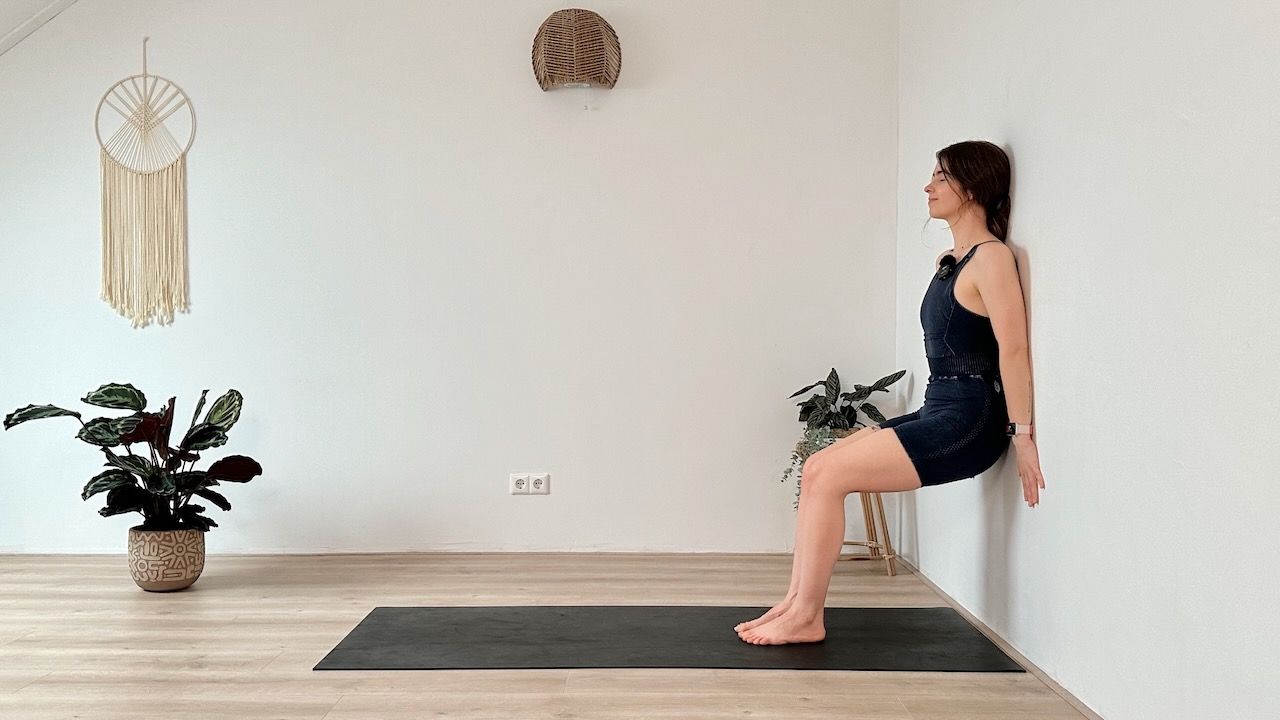
Wall Squat
- Benefits:
- Strengthens the quadriceps, glutes, and calves.
- Improves lower body endurance and stability.
- Alignment Tips:
- Maintain a neutral spine and engage the core.
- Ensure that your knees don't go beyond toes to protect the knees.
- Variations:
- Hold the squat for 30-60s or incorporate a small pulse for added intensity.
- Rise onto your toes.
- Play with the height of your hips. Go higher to make it easier and lower to make it more challenging.
- Keep in mind:
- Prevent your knees from collapsing inward during the squat. You can use a Pilates Ball, Towel or Yoga Block between your thighs.
- Avoid pressing your back to the wall or arching your lower back excessively, we want to maintain the natural curve of the spine.
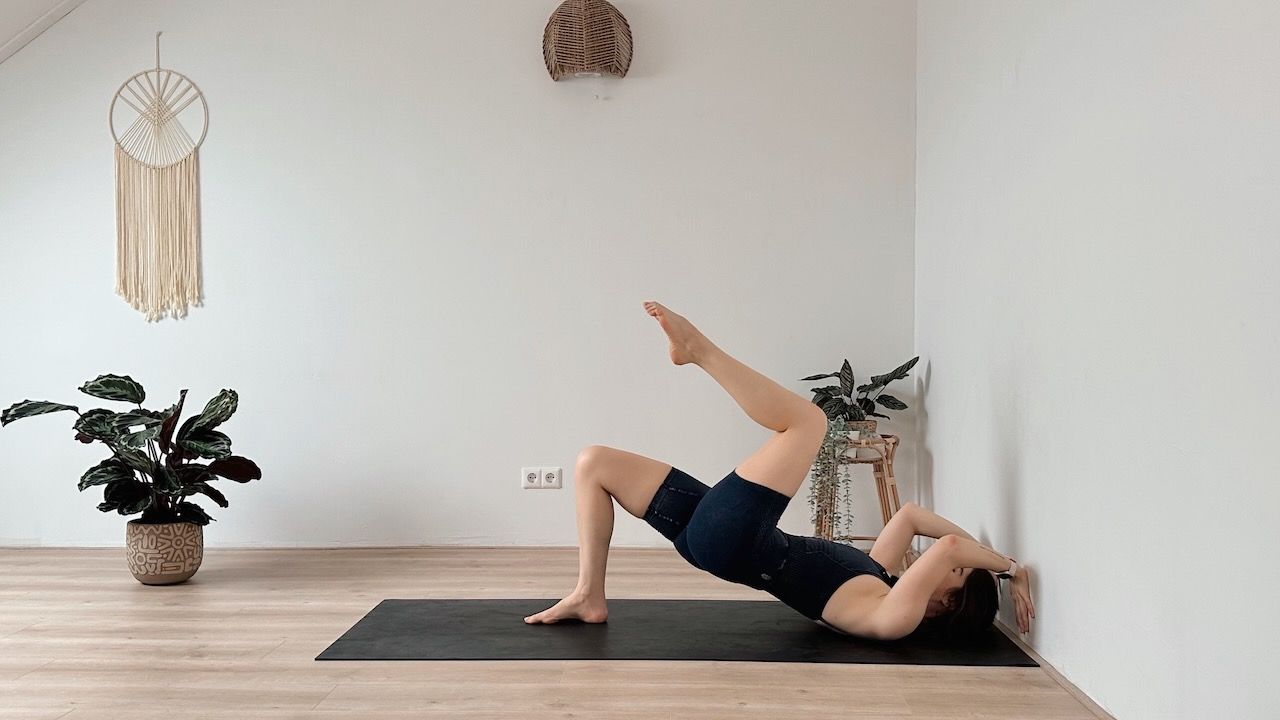
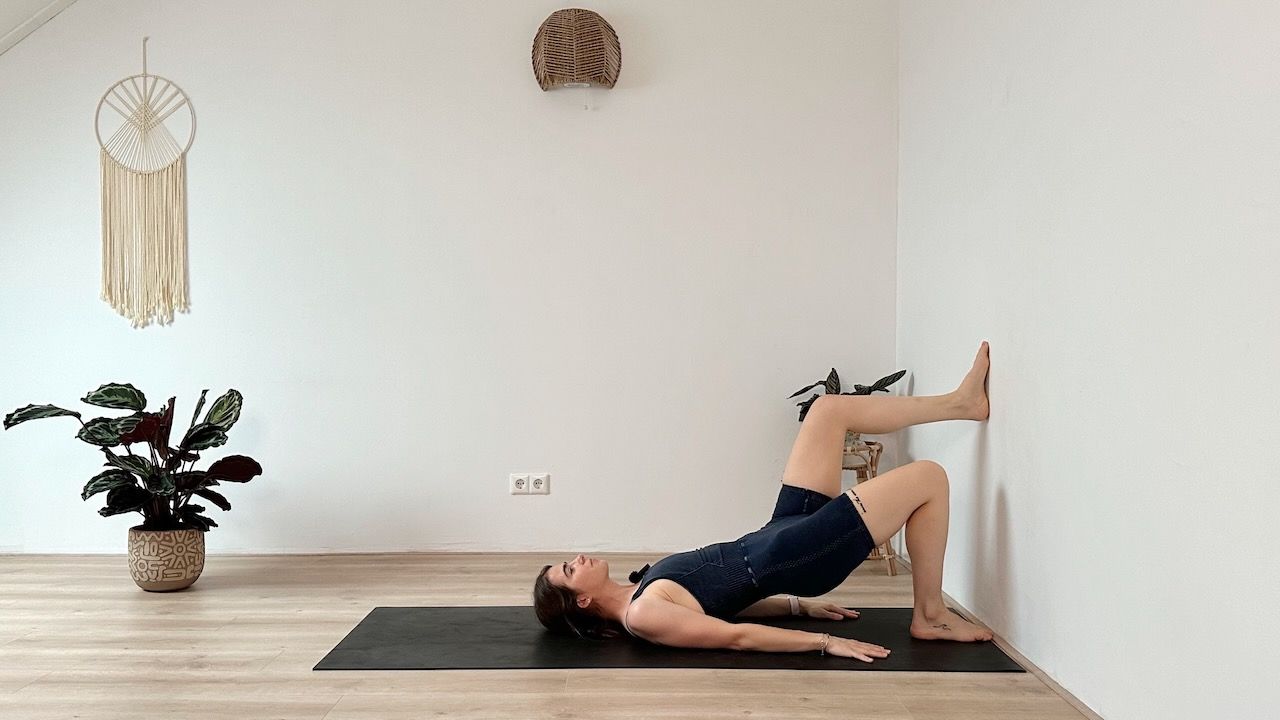
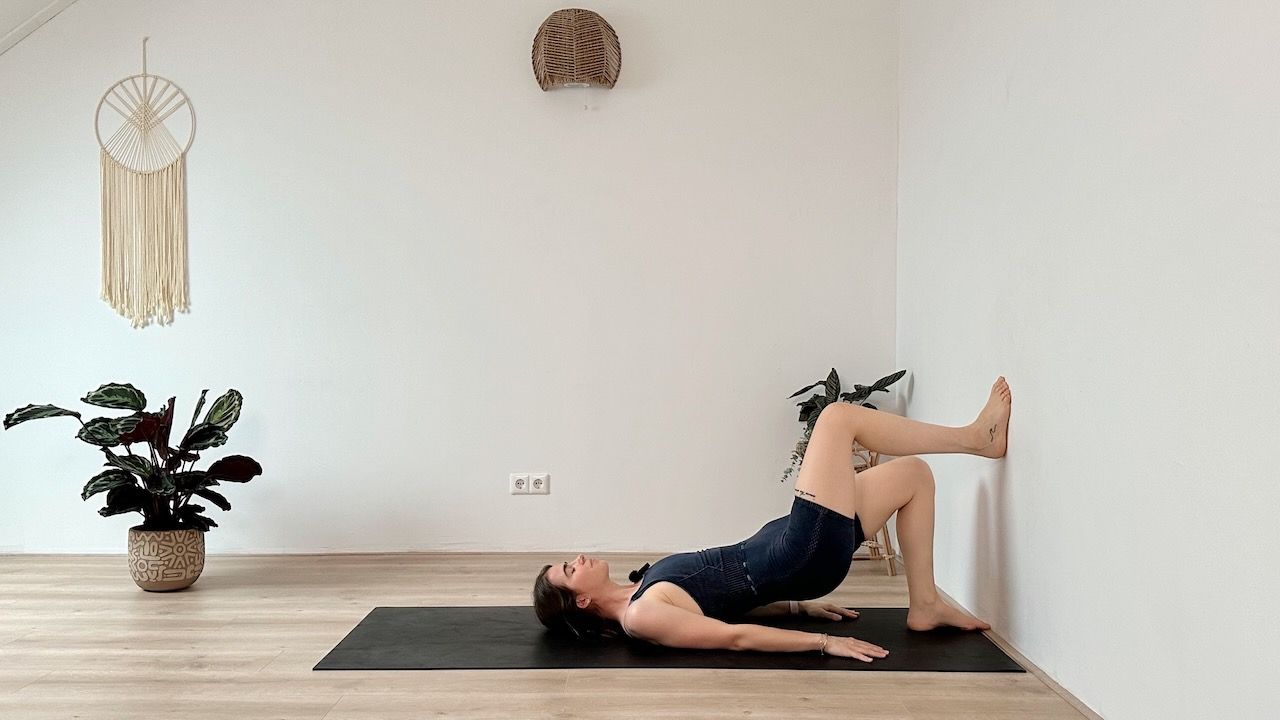
Bridge at the Wall
- Benefits:
- Strengthens the glutes, hamstrings, and lower back.
- Alignment Tips:
- To prepare, walk your feet towards your glutes until you could just reach your heels with your fingers.
- with hands at the wall
- Gently press your hands into the wall, elbows point up. This helps the shoulders to stay grounded and prevents your upper body from moving.
- with feet at the wall:
- Press feet firmly into the wall, engaging the core and lifting the hips. You can always keep one or both feet on the mat.
- Relax shoulders and neck on the ground.
- Be careful to not lift too high; the weight shouldn't come onto your neck.
- Variations:
- Lift one leg at a time for a unilateral exercise.
- Rise onto toes
- To make it more gentle, keep your feet on the mat.
- Keep in mind:
- Avoid excessive pressure on your neck by keeping it relaxed and in a neutral position, your gaze up.
- Avoid lifting your hips so high that it strains your lower back and neck.
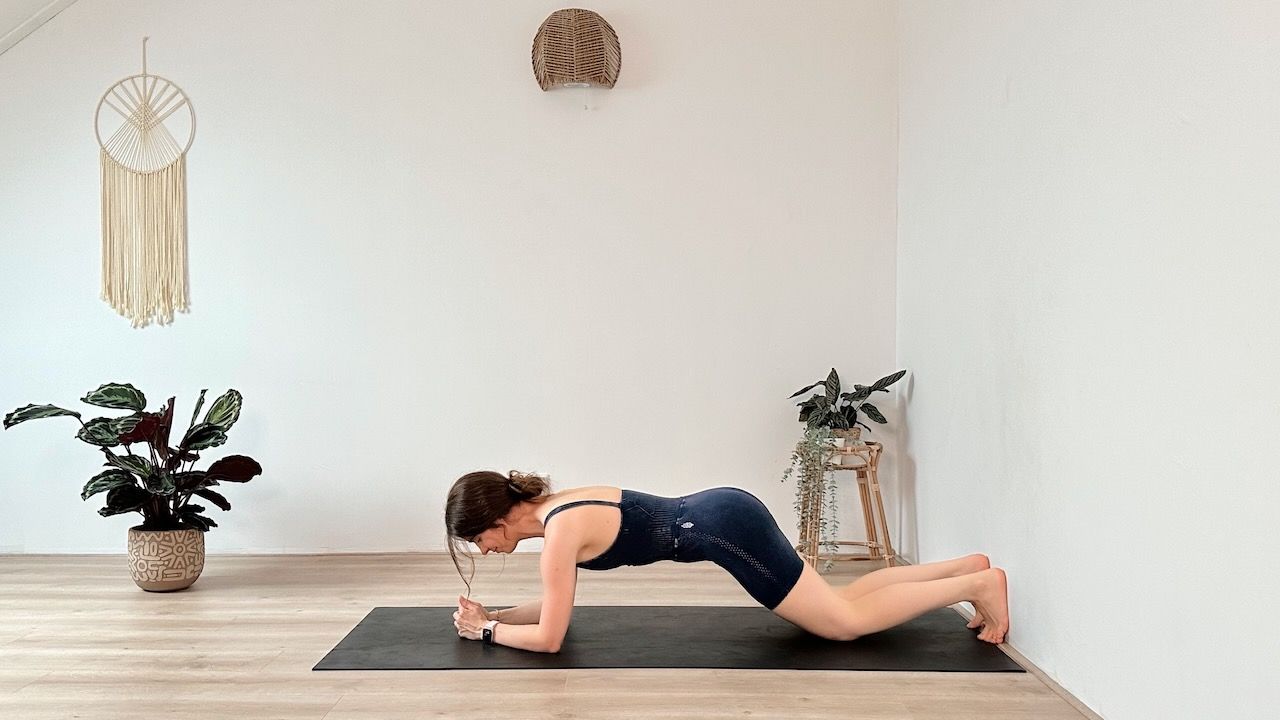
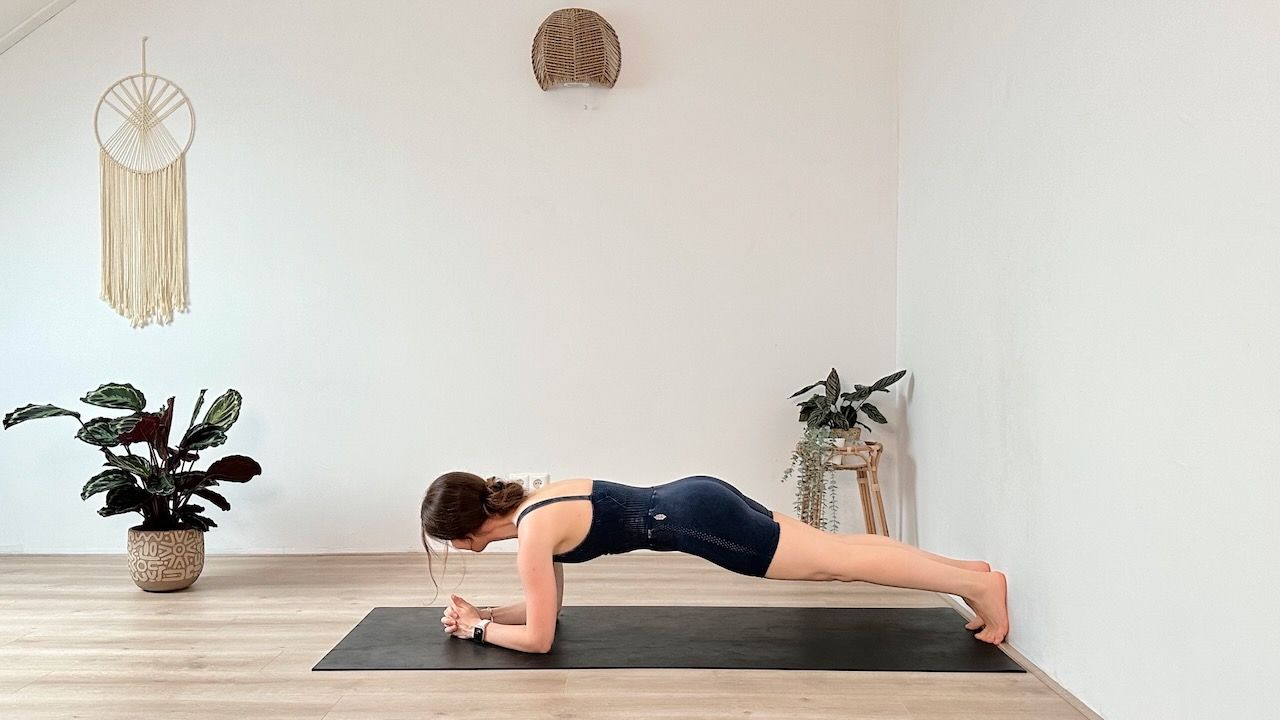
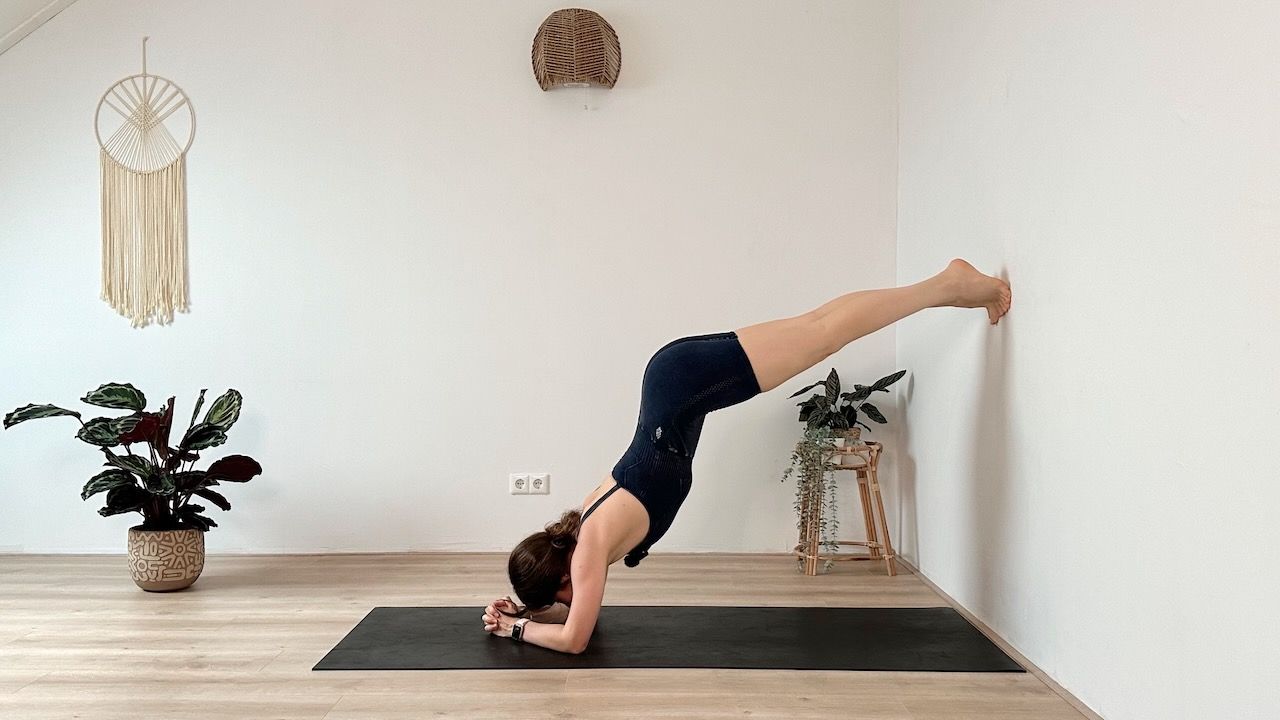
Dolphin Plank (Forearm Plank)
- Benefits:
- Strengthens the core, shoulders, and arms.
- Enhances overall body strength and stability.
- Alignment Tips:
- Engage the core.
- Keep your elbows shoulder-width apart.
- Heels on the wall, toes on the mat.
- Variations:
- Keep your knees on the mat.
- If you're feeling strong, carefully walk up the wall, one foot at a time.
- Keep in mind:
- Avoid allowing your hips to sag towards the ground, maintain a strong position. There's nothing wrong about bringing your feet/knees down.
- Avoid excessive arching of the lower back.
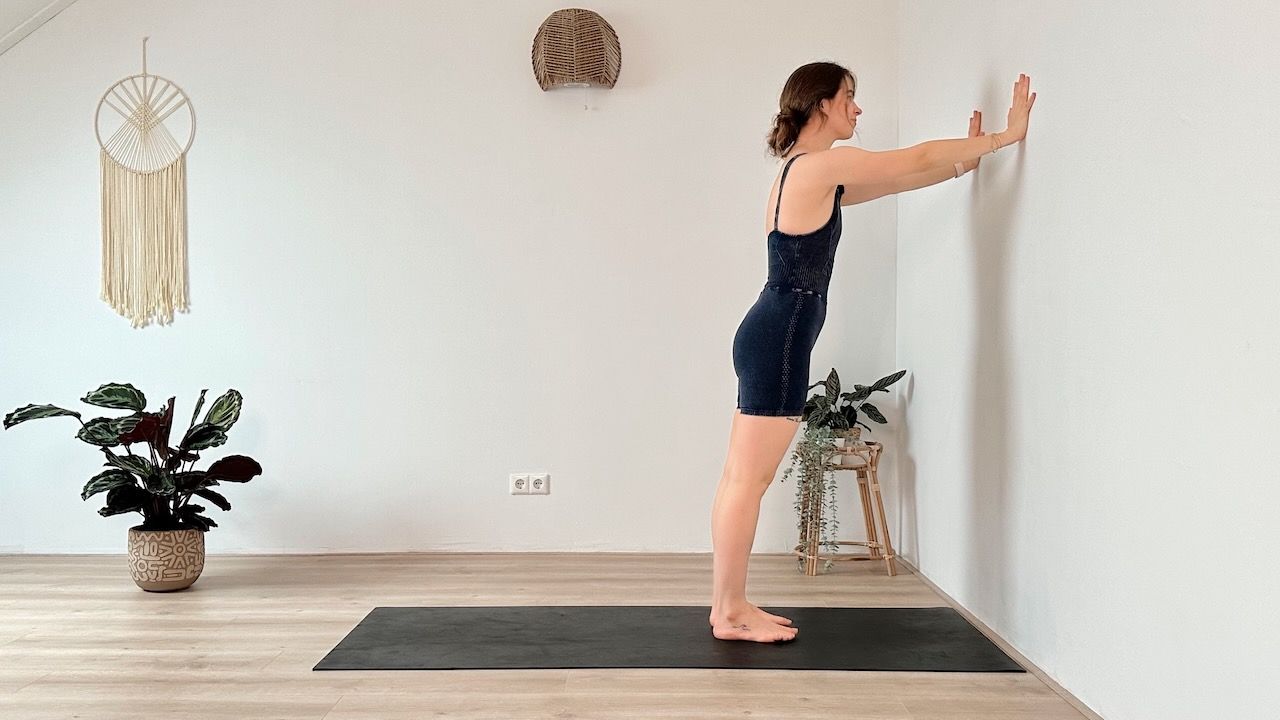
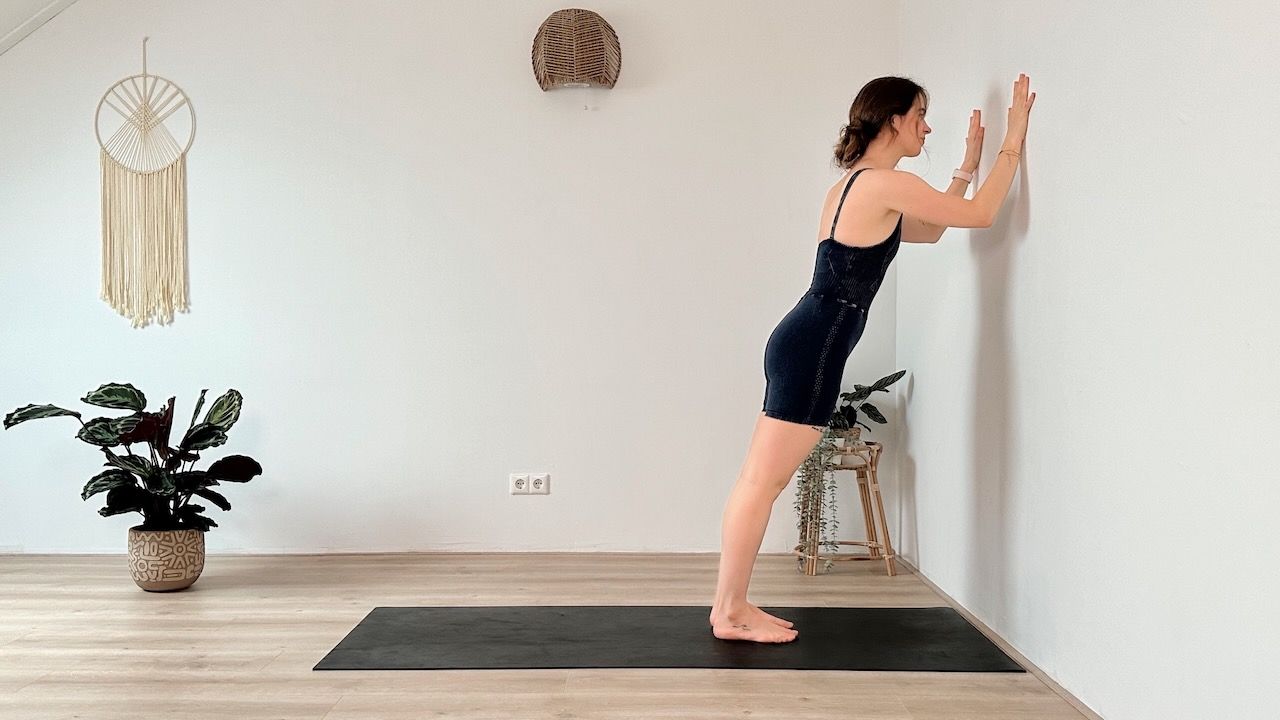
Standing Push up against the Wall
- Benefits:
- Strengthens the chest, shoulders, triceps, and core muscles.
- Provides a controlled upper body workout, especially for beginners, seniors or those with wrist issues.
- Gentle way to build upper body strength.
- Alignment Tips:
- Stand facing the wall, about arm's length away, with your hands shoulder-width or slightly wider apart.
- Hands around eye height.
- Maintain a neutral spine.
- Variations:
- Adjust the distance from the wall to increase (step further away) or decrease (step closer to the wall) the intensity.
- Rise onto your toes.
- Experiment with hand placement to target different areas of the chest and shoulders.
- Keep in mind:
- Avoid overarching your lower back or allowing your hips to sag, which can strain the lower back.
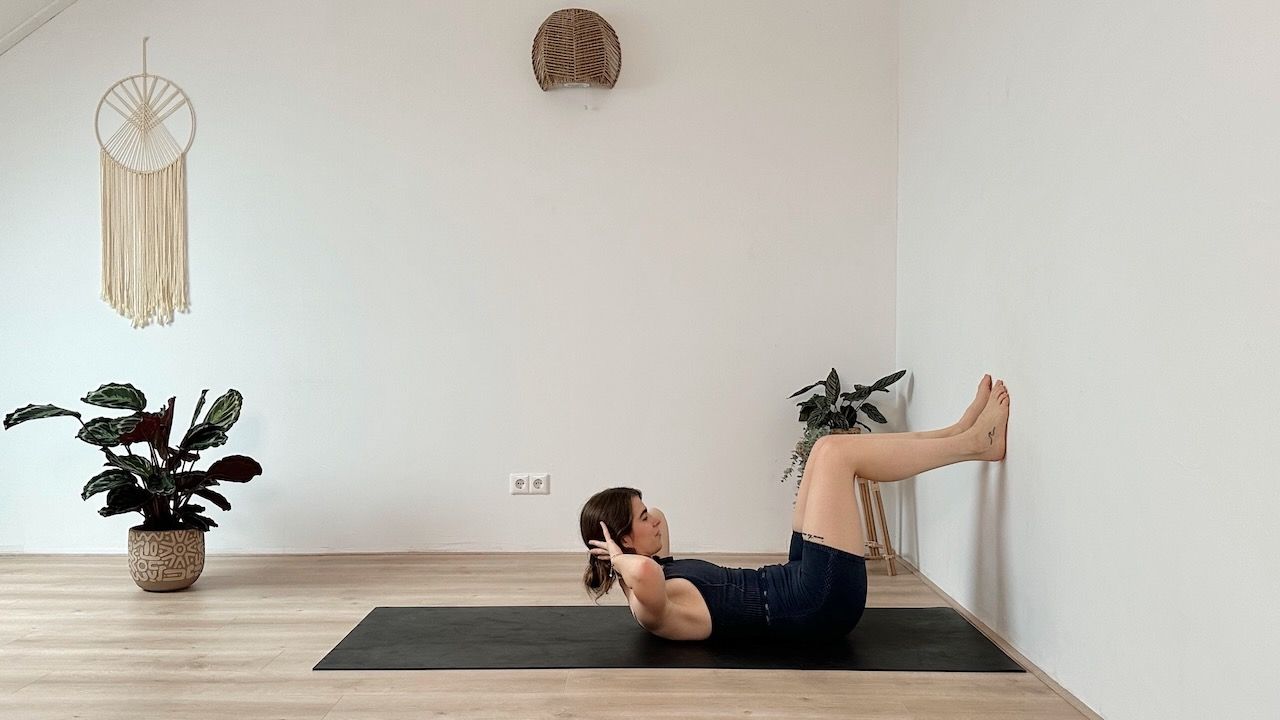
Wall Crunch (Feet at the Wall)
- Benefits:
- Targets the abdominal muscles and strengthens the core.
- Provides a stable and supported crunch, suitable for various fitness levels.
- Alignment Tips:
- Lie on your back with your feet on the wall, knees bent at 90 degrees, knees over your hips, and shins parallel to the mat.
- Place your hands behind your head, elbows wide, and maintain a neutral spine.
- Exhale and engage your core to lift your head, shoulders, and upper back off the floor, aiming to bring your chest towards your knees, your gaze just below to your knees. Inhale release.
- Variations:
- Cross your arms over your chest for a different hand position.
- Try a bicycle crunch.
- Keep in mind:
- Be mindful not to pull on your neck with your hands during the movement; focus on engaging your core to lift your upper body.
- Avoid using momentum or jerking your body to perform the crunch; maintain a controlled and smooth motion.
- Avoid pushing your body beyond its limits; start with a comfortable range of motion and gradually progress.
...and don't forget to stretch:
These Yoga poses at the wall are a great addition to any Wall Pilates Workout. If you're looking for short yoga stretch at the wall, join me for this 10 Minute Yoga at the Wall.
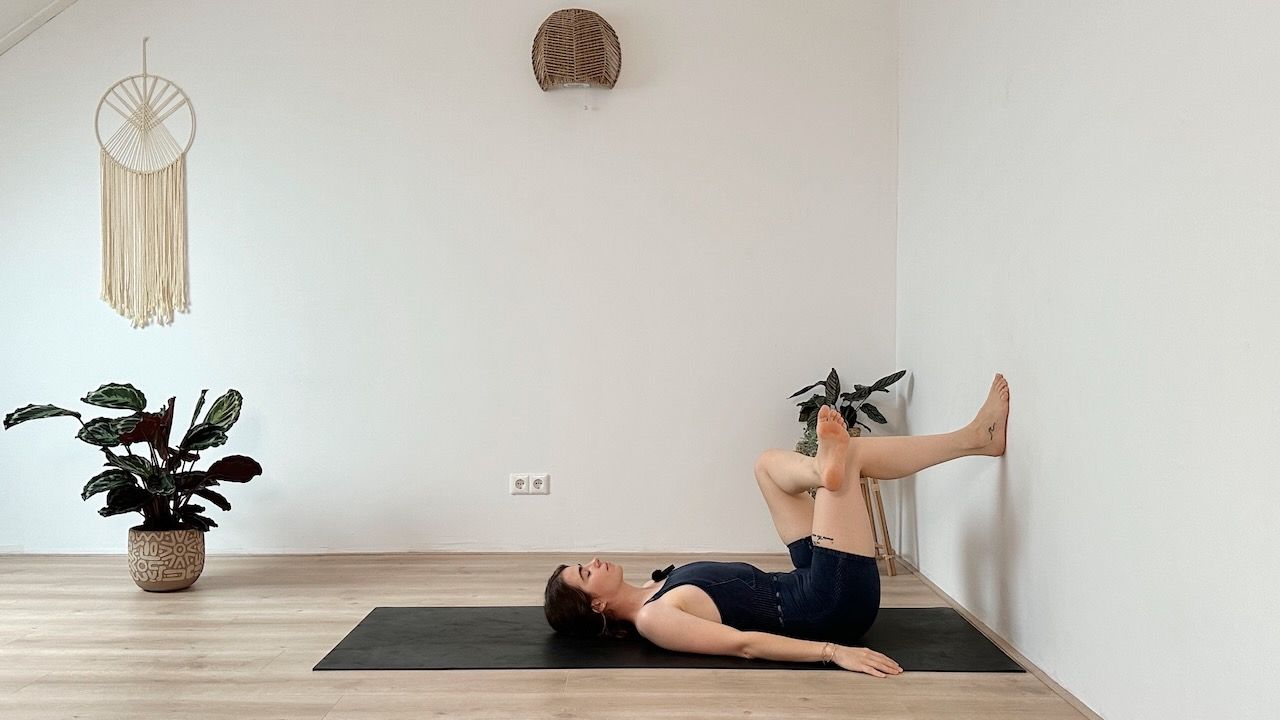
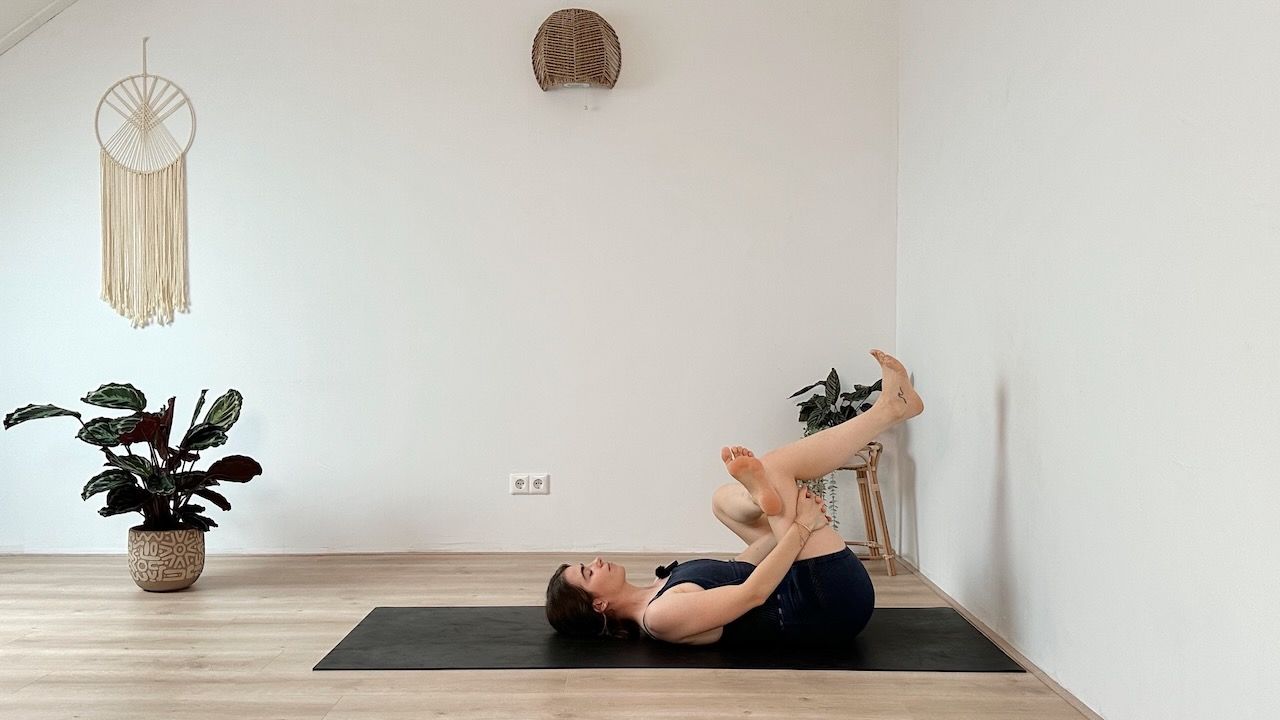
Reverse Pigeon at the Wall (Reclined Figure Four)
- Benefits:
- Stretches the glutes, hips, and piriformis muscle.
- Improves hip mobility.
- Can help to relieve lower back pain and sciatic pain.
- Alignment Tips:
- Maintain a neutral spine and avoid rounding the back.
- Keep your head and back resting on the mat.
- Variations:
- Increase the stretch by gently pressing the knee (the left knee in the pictures) towards the wall.
- Hug the leg (side where the foot is at the wall) in, releasing the foot from the wall. Option to hug the shin in for a deeper stretch.
- Keep in mind:
- Avoid forcing the stretch, you can always ground the foot.
- Be cautious with the positioning of your foot to avoid strain on the knee. If it hurts, be more gentle with the stretch.
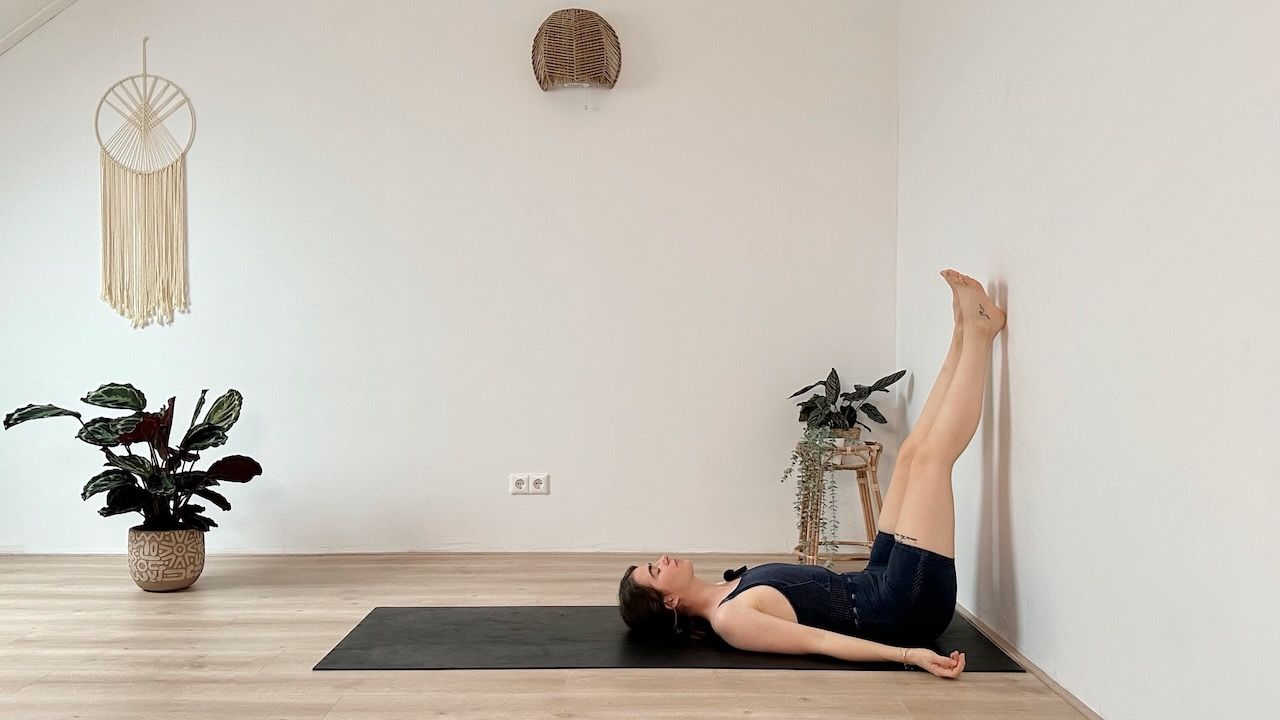
Legs up the Wall
- Benefits:
- Promotes relaxation and reduces stress.
- Relieves tired or swollen legs and feet.
- Alignment Tips:
- Keep a soft bend in your knees.
- Relax your arms by your sides or place them on your belly.
- Variations:
- Place a folded blanket under your hips for added comfort.
- Keep your knees bent at 90°, knees above your hips, feet at the wall.
- Keep in mind:
- Avoid pushing your legs too hard against the wall, especially if it causes discomfort.
- Prevent locking your knees or hyperextending them against the wall. That's why I like to cue "a soft bend" in the knees.
I hope this was helpful. If you're ready to try it in action, try one of my Wall Pilates workouts and let me know what you think! 😊

